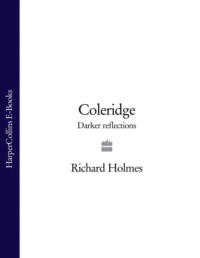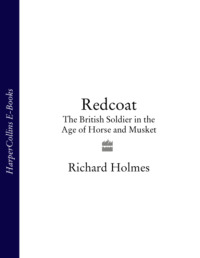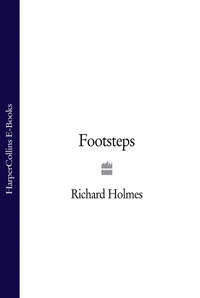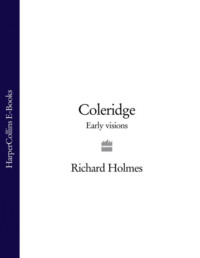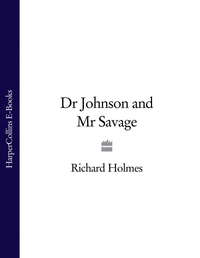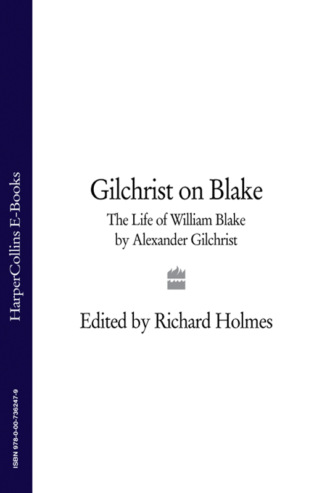
Полная версия
Gilchrist on Blake: The Life of William Blake by Alexander Gilchrist
A week later, just as his little daughter Beatrice began to pull through, Gilchrist was himself struck down. Jane Carlyle sent notes offering help to Anne, and Thomas Carlyle brought a fashionable physician, who looked at Gilchrist from the distance of the sickroom door and hastily departed. After that, events unfolded quickly. Ten days after he had sent his desperate, apologetic letter to his publisher Macmillan, Alexander Gilchrist slipped into a coma.
Anne later wrote: The brain was tired with stress of work; the fever burned and devastated like a flaming fire: to four days of delirium succeeded one of exhaustion, of stupor; and then the end; without a word, but not widiout a look of loving recognition. It was on a wild and stormy night, 30 November 1861, that his spirit took flight.’
Alexander Gilchrist died at the age of thirty-three. His great biography of Blake, his labour of love, had been wonderfully researched and written in draft. But it was unfinished.
3
With her peculiar force and independence, Anne Gilchrist immediately determined to finish the biography for him. Less than a week after Alexander’s death, she wrote to Macmillan on 6 December 1861, ‘I try to fix my thoughts on the one thing that remains for me to do for my dear Husband. I do not think that anyone but myself can do what has to be done to the Book. I was his amanuensis…’
She packed up his papers, returned a mass of borrowed pictures and manuscripts, refused Jane’s invitation to move in with the Carlyles, and took the children and the unfinished book down to a clapboard cottage in tiny village of Shottermill, a mile from Haslemere in Sussex.
To understand what happened next, we have to turn to Anne Gilchrist’s own story. She had always been an independent spirit. She was born Annie Burrows in February 1828 in Gower Street, London, but was partly brought up in the country at Colne in Essex. Here, when she was nine years old, her beloved elder brother Johnnie saved her life. The incident, as re-told, has a curious fairy-tale-like quality. While exploring a secret part of the garden, little Annie fell backwards into a deep well, and would have certainly drowned, had not Johnnie reached down and just managed to hold her up by the hair, until help finally came. Over thirty years later she put this strangely symbolic tale of survival into a children’s story, Lost in the Woods (1861).
Anne’s father was a London lawyer, strict and demanding, who died aged fifty-one in 1839, when she was only eleven. From then on, the family were on their own, and Anne was in some sense a liberated spirit. They moved to Highgate, where Anne went to school, a handsome tomboy, clever and rebellious. She was musical, well-read, and free-thinking. At seventeen she was surprised by the local vicar, when reading Rousseau’s sexually explicit Confessions on a tombstone in Highgate Cemetery. Embarrassment was avoided (according to Anne) when the vicar misheard the title as St Augustine’s Confessions.
At nineteen she became fascinated by scientific ideas, a further unladylike development. She announced to a friend that the intellectual world was divided between Emerson and Comte, between the spiritual and the materialist, and she was tending towards the latter.
In 1847 (the year Rossetti bought the Blake manuscript), she was devastated by the death of her ‘angel brother’, Johnnie. A year later, aged twenty, she announced her engagement to one of Johnnie’s friends, a handsome young law student, Alexander Gilchrist, ‘great, noble and beautiful’. In a way, he was probably a substitute brother. She deeply admired him, but from what she said later, she was never truly in love. What Alexander offered was the chance of freedom and independence. Their unorthodox Etty honeymoon was a promise of things to come.
After the birth of their four children – Percy, Beatrice, Herbert, and Grace – she set herself to earn additional household money by writing small pieces for the monthly magazines, and Chambers Encyclopaedia. The first of these, ‘A Glance at the Vegetable Kingdom’, was published in Chambers in spring 1857, shortly after they moved into Cheyne Row.
Unexpectedly, Anne made a specialty of popular science subjects. Moreover, she was remarkably successful. In 1859, the year of Darwin’s Origin of Species, she wrote a controversial article on the newly discovered gorilla, ‘Our Nearest Relation’, comparing its skills and habits to homo sapiens. It was published in Charles Dickens’ magazine, All the Year Round. Next she wrote on Whales and Whaling’, and in the following years she produced several further young person’s guides to scientific topics: What is Electricity?’, ‘What is a Sunbeam?’, and The Indestructibility of Force’. Her ability to research, organize and explain technical subjects for the general reader was highly unusual.
Her role as Gilchrist’s amanuensis was therefore more that it might superficially appear. She seems to have become a genuine literary partner. Anne claimed the subsequent work on the biography came to her as a kind of posthumous collaboration. ‘Alex’s spirit is with me ever – presides in my home; speaks to me in every sweet scene; broods over the peaceful valleys; haunts the grand wild hill tops; shines gloriously forth in setting sun, and moon and stars.’
This may have been true, but she was also driven by other, though no less powerful emotions. Essentially, she seems to have felt guilty about Gilchrist’s death. She felt that she had never been his true wife. Nearly a decade later, in September 1871, she wrote a remarkable confession of her own. ‘I think…my sorrow was far more bitter, though not so deep, as that of a loving tender wife. As I stood by him in the coffin, I felt such remorse I had not, could not have, been more tender to him – such a conviction that if I had loved him as he deserved to be loved he would not have been taken from us. To the last my soul dwelt apart and unmated, and his soul dwelt apart and unmated.’
Her drive to complete his biography of Blake was, therefore, far more than a show of pious sentiment, a widow’s tender offering. It was more like an uneasy debt of honour, the recognition of a difficult but sacred trust. Anne already knew much of Alexander’s method of working, and his perfectionism. What she did not know was whether she could match it. She wrote to Macmillan: ‘Many things were to have been inserted – anecdotes etc. collected during the last year, which he used to say would be the best things in the book. Whether I shall be able to rightly use the rough notes of these and insert them in the fittest places I cannot yet tell. He altered chapter by chapter as he sent it to the printers…’
Three months later, in March 1862 she again wrote Macmillan that, to her surprise, she had completed sorting and arranging all of Alexander’s remaining material for the book. It would be faithfully completed. ‘You shall not find me dilatory or unreliable; least of all in this sacred trust.’ Fiercely defensive of every word of Alexander’s existing text, she carefully began to pull together the drafts of the outstanding chapters. She made regular visits to the British Museum, catching the London train up from Haslemere station. She checked his facts and polished his style. She defended him against Macmillan’s charges of sometimes writing too flamboyantly, like Carlyle.
Most crucially, she turned for help to the Rossettis. She did not want them to touch the text of Alex’s biography, but she wanted help with the companion volume: the catalogue of Blake’s pictures and an anthology of his poetry. She proposed to Macmillan that he commission a second volume, to consist of an annotated catalogue of Blake’s visual work compiled by Michael Rossetti, and a selection of Blake’s poetry edited by Dante Gabriel. This was agreed, and the whole project now advanced rapidly on its new footing.
The sudden death of Dante Gabriel’s own wife, Lizzie Siddal, that same spring of 1862, added a peculiar intensity to the work of selection. (‘I feel forcibly’, he wrote to Anne, ‘the bond of misery that exists between us.’) He moved back into bachelor lodgings, which he shared with Meredith and the young Swinburne, and they too acted as unofficial Blake readers and selectors. Even Christina Rossetti came to stay at the Shottermill cottage.
So not only had the whole Rossetti family now rallied round Anne’s ‘Herculean labour’, but the two volume work had almost become a group enterprise, a Pre-Raphaelite project to restore Blake, and to do honour to his young idealistic biographer. As Dante Gabriel wrote to Anne, ‘I would gladly have done it for Blake’s or gladly for your husband’s or gladly for your own sake, and moreover, had always had a great wish of my own to do something in this direction…’
The twin volumes were to be delivered twelve months later, in spring 1863.
4
Who, then, finally wrote Gilchrist’s Life of William Blake?
It is clear from their correspondence, that the Rossettis almost entirely confined themselves to the editorial work on the second volume alone. Dante Gabriel was asked to write a ‘Supplementary’ summary (Chapter 39, no longer included); and to fill in a missing description of Blake’s Book of Job (Chapter 32), ironically the very work that had first drawn Gilchrist to Blake. Apart from that, they touched virtually nothing in the first volume, because they were not permitted to. Anne regarded the text of the biography as a sacred to Gilchrist’s memory. She was its sole guardian. ‘I think you will not find it hard to forgive me a little reluctance,’ she wrote to William Rossetti, ‘that any living tones should blend with that voice which here speaks for the last time on earth.’
But how far she herself added new materials from Alexander’s notes, or made stylistic changes, must remain more problematic. In April 1862 she was speaking of ‘incorporating all the additional matter contained in the notes’ into a final draft, which sounds quite radical. But by the end of May, the position was almost reversed. ‘I am glad to say I find the Manuscript even more complete than I anticipated, and that a large mass of Notes which I had thought contained new matter, were merely for reference and verification.’ To the end of her days Anne insisted that she was nothing more than her husband’s ‘editor’. But since Gilchrist’s original manuscript has not survived, there is no way of knowing precisely how she understood this role.
However, it is difficult to find evidence of any large editorial additions or interventions. For example, Alexander had frequently lamented his failure to develop any proper critical commentary on the poetry (as opposed to the illuminations) of Blake’s ‘Prophetic Books’. Anne was clearly tempted to remedy this. ‘I found the only grave omission in the book – the only place where dear Alec had left an absolute blank that must be filled in – was for some account of Blake’s mystic writings, or ‘Prophetic Books’, as he called them.’
But although she consulted with Rossetti, she did not in the end attempt to add any significant commentary, writing ruefully: ‘I could heartily wish the difficult problem presented by these strange Books had been successfully grappled with, or indeed grappled with at all. Hardly anything has now been attempted beyond bringing together a few readable extracts…They are at least psychologically curious and important.’ The omission is very clear, for example in the desultory remarks on Jerusalem in Chapter 21, despite the fact that Anne had meticulously copied out the entire text by hand, from a rare copy loaned with great reluctance (‘only for a week’) by Monckton Milnes.
In fact, she seems to have conceived her main role as protecting what Alexander had written and quoted. There was some need for this. The genial Palmer was desperate to avoid anything that hinted at ‘blasphemy, while Macmillan was acutely nervous of Blake’s erotic writing; he anxiously read every line of the proofs, and questioned even single lines from the poems, especially those from The Daughters of Albion’. William Rossetti wrote: The pervading idea of “The Daughters of Albion” is one which was continually seethling in Blake’s mind, and flustering Propriety in his writings…It is the idea of the unnatural and terrible result in which, in modern society, ascetic doctrines in theology and morals have involved the relations of the sexes…in [this] cause he is never tired of uprearing the banner of heresy and non-conformity.’
Anne replied on 3 October 1862: ‘I am afraid you will be vexed with me…But it was no use to put in what I was perfectly certain Macmillan (who reads all the proofs) would take out again…It might be well to mention to Mr Swinburne that it would be perfectly useless to attempt to handle this side of Blake’s writings – that Mr Macmillan in far more inexorable against any shade of heterodoxy in morals, than in religion…in fact poor “flustered Propriety” has to be most tenderly and indulgently dealt with.’
She was beset by other diplomatic problems. One of the original Ancients, the painter John Linnell, offered to oversee all the proofs, but made it clear that he would alter the text where he did not approve of it. Anne knew that Alexander had already rejected this idea long before: ‘the bare notion of it filled him with horror: I do not think he ever showed proof or manuscript to the most congenial friend even.’ This was a policy that Anne clearly intended to continue.
Alexander had made the ‘most minute notes’ of all Linnell told him, but believed there was ‘considerable divergency’ in their view of the facts. ‘Besides,’ concluded Anne, ‘a biographer’s duty often is to balance the evidence of conflicting witnesses.’ To have acceded to Linnell would, she felt sure, have been ‘a most imprudent, and indeed treacherous thing on my part.’
There were other difficulties among the survivors, and keepers of the flame. Frederick Tatham had quarreled with Linnell over the ownership of some of Blake’s Dante drawings, and Anne believed that Tatham had also imposed on Blake’s widow by silently selling off many of his engraved books over ‘thirty years’. Such post-mortem disputes between the Ancients were peculiarly confusing to Anne. Yet she retained absolute confidence in Alexander’s view of the situation. ‘My husband, who had sifted the matter, and knew both parties, thought Linnell an upright and truthful, if somewhat hard man, and that towards Blake his conduct had been throughout admirable. He also inclined to think, that Mrs Blake retained one trait of an uneducated mind – an unreasonable suspiciousness…’ Here, she was in fact quoting Gilchrist’s own words from the biography.
She was however dismayed to discover that Tatham, in a fit of religious zeal, had much later destroyed many of Blake’s manuscripts. For a biographer this was itself the ultimate sin, and would have appalled Alexander. She wrote angrily to Rossetti, saying that Tatham had come to believe that Blake was indeed inspired, ‘but quite from a wrong quarter – by Satan himself – and was to be cast out as an “unclean spirit”.’ This was a ghastly parody of Gilchrist’s subtle, secular, psychological appreciation of Blake’s profound eccentricity and originality. She would have nothing to do with it.
The most challenging editorial problem arrived last. In January 1863, when the biography was already printing, Anne was sent ten precious letters of Blake’s to his young publisher and patron, Thomas Butts. At a stroke, this doubled the number of surviving letters. They all dated from the crucial – and little known – period of creative renewal, when Blake retired to a tiny cottage in Felpham, Sussex, between 1800 and 1804. These gave a wholly new insight into Blake’s character, his views of his art and patronage, and some wonderful examples of his most limpid but visionary prose.
The villagers of Felpham are not mere rustics; they are polite and modest. Meat is cheaper than in London; but the sweet air and the voices of winds, trees, and birds, and the odours of the happy ground, make it a dwelling for immortals. Work will go on here with God-speed. A roller and two harrows lie before my window. I met a plough on my first going out at my gate the first morning of my arrival, and the ploughboy said to the Ploughman, ‘Father, the gate is open.’
One letter even gave a long and detailed account, from Blake’s point of view, of the fracas with a soldier in the garden at Felpham which lead to his trial for ‘seditious and treasonable utterance’ in 1804. This was one of the most dramatic events in Blake’s life, and perhaps a turning point in his professional career. Gilchrist had already given up a whole chapter to describing the incident. His account was based on Catherine’s memories, Hayley’s letters, and a local Sussex newspaper report of the trial. While defending Blake as certainly not guilty of real treason, Gilchrist allowed it to be tacitly understood that Blake did treat the soldier with some violence, ‘in a kind of inspired frenzy’, and probably did shout some ill-advised political things at him:’ “Damn the King, and you too,” said Blake with pardonable emphasis.’ Blake’s own account was far more exculpatory, and intriguingly different.
How should Anne handle this unexpected biographical windfall? Macmillan claimed he was too far advanced with the printing to allow Anne to insert these letters at such a late stage. However, since they were discovered nine months before the book was finally published, it seems that Anne herself was loath to disrupt Alexander’s narrative. Yet the letters were extremely revealing, and Anne could not bear to omit them. ‘I have all but finished copying Blake’s letters; a task of real enjoyment, for they are indeed supremely interesting, admitting one as far as anything he ever wrote into the “inner precincts” of his mind…’
In the end, the solution she chose was to print the ‘LETTERS TO THOMAS BUTTS’ separately, as an appendix to the Life (where they can now be found). This perhaps gives the clearest indication of the subsidiary way she saw her own editorial function. This solution (although clearly not ideal) allowed her carefully to retain Alexander’s perceptive narrative of the Sussex period without interruption (Chapters 16 to 19). But it also allowed her to appear modestly in her own role of Editor, remarking on the light that the letters now threw on ‘the undercurrents of Blake’s life’, and wishing only that Alexander had seen them before he died.
By autumn 1863, Anne had surmounted all these difficulties. Far from finding the work burdensome, she later said characteristically, that it had proved a support and a consolation to her in the time of mourning. That beloved task (the Blake) kept my head above water in the deep sea of affliction, and now that it is ended I sometimes feel like to sink – to sink, that is, into pining discontent – and a relaxing of the hold upon all high aims…’ The Life was finally published in two volumes in October 1863.
5
Two thousand copies were printed, and reviews appeared rapidly. There were some initial doubts whether the biography would, as Anne put it, ‘shock devout minds’. One reviewer observed evenly: ‘a more timid biographer might have hesitated about making so open an exhibition of his hero’s singularities.’ But it was soon clear that the book would be a triumph. It was widely admired by the entire Pre-Raphaelite circle, Robert Browning wrote a fan letter, and Samuel Palmer spoke for the Ancients when he described it as ‘a treasure’. He added thoughtfully, ‘I do hope it may provoke a lively art-controversy in the periodicals, unless people have gone quite to sleep’. He had ‘read wildly everywhere’, and concluded tenderly, ‘already it is certain to be an imperishable monument of the dear Biographer.’
It was loyally hailed by Carlyle: ‘thankfulness is one clear feeling; not only to you from myself, but to you for the sake of another who is not here now.’ He considered it ‘right well done – minute knowledge well-arranged, lively utterance, brevity, cheerful lucidity’. Later he told Anne, with a tact surely designed to please the editor, that the whole biography was remarkable for ‘the acuteness and thoroughness with which the slightest clues had been followed out in gathering the materials, and with all this toil and minute accuracy on the writer’s part, nothing but pleasure for the reader – no tediousness.’
The great strengths of the work, which Anne had so faithfully preserved, were quickly apparent. Gilchrist’s approach is lively, personal, enthusiastic and often humourous – quite unlike much over-earnest mid-Victorian biography. The quick, informal, darting style of his prose lends a sense of continual discovery and excitement to the narrative, and yet allows for virtuoso passages of description and summary.
It is extraordinarily well-researched, especially in the use made of the previous memoirs by Malkin, Tatham, Linnell, Palmer, Crabb Robinson, and others. Although he had lacked the Butts Letters, Gilchrist draws effectively on some original correspondance with Flaxman in the early years, and the expressive series of short notes to John Linnell at Hampstead in the last years. He also quotes brilliantly throughout from Blake’s own works, both prose and poetry, much of it quite unknown to contemporary readers, such as the early ‘Notes on Lavater’ and the ‘Proverbs of Hell’. He was, too, the first Victorian writer to pick out and reprint in full Blake’s great ‘Jerusalem’ hymn from the preface to Milton, ‘And did those feet in ancient times’, in Chapter 21.
There are two qualities in Gilchrist’s writing, which make him such an exceptionally vivid biographer. The first is his sense of physical place. Gilchrist had a gift for evoking particular London streets, characteristic clusters of buildings or courtyards, and beyond them certain rural landscapes and secluded villages, where Blake had lived and worked. He captured their appearance, mood and atmosphere, and gave hints of their visionary meanings, or auras, for Blake.
Gilchrist had spent endless days researching and identifying them, following meticulously in Blake’s footsteps. He could also add fascinating observations of how these sacred places had changed in the subsequent fifty or so years, giving a sense of historical continuity. In this way, the biography first gave Blake’s extraordinary imaginative life ‘a local habitation and a name’. The descriptions of the gothic interior of Westminster Abbey, or of Hercules Building (and its garden) in Lambeth, or of the cottage and seashore at Felpham, and the last, hidden lodgings at Fountain Court are especially evocative in this respect.
The second quality is his power to conjure up Blake’s pictures and designs for the reader. Only few of these were actually illustrated in black and white engravings, so a great deal depended on Gilchrist’s verbal descriptions. He found a remarkable way of bringing these to life in virtuoso passages of exquisite prose ‘dramatization’, the energy of his syntax matching the energy of Blake’s line, which became a major feature of his biography. Here the young art critic comes into his own. This, for example, is how he brilliantly evoked the life and movement of the thirteen designs for ‘A Memorable Fancy’, in Chapter 10.
The ever-fluctuating colour, the spectral pigmies rolling, flying, leaping among the letters; the ripe bloom of quiet corners, the living light and bursts of flame, the spires and tongues of fire vibrating with the full prism, make the page seem to move and quiver within its boundaries, and you lay the book down tenderly, as if you had been handling something sentient. A picture has been said to be midway between a thing and a thought; so in these books over which Blake had brooded, with the brooding of fire, the very paper seems to come to life as you gaze upon it – not with a mortal life, but with a life indestructible, whether for good or evil.
Gilchrist made the defense of Blake’s eccentricity, and the rejection of his supposed insanity, a commanding theme from the beginning of the biography.


